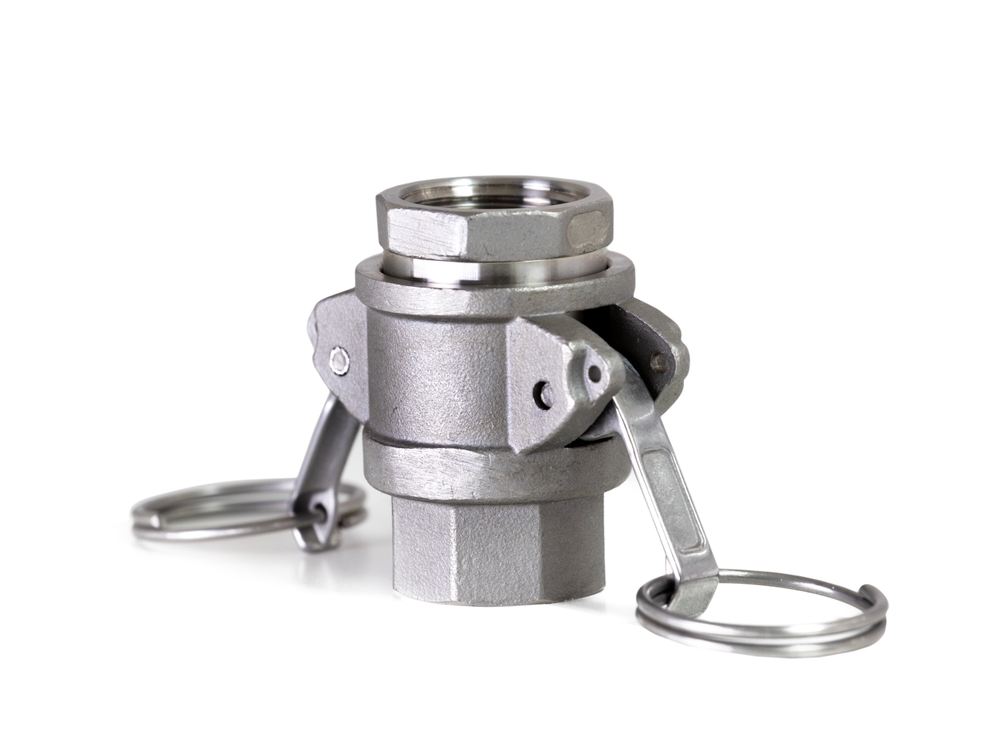
Choosing the Right Camlock Fittings
Camlock fittings, also known as cam and groove couplings, are a popular choice for quick and efficient connections in various industrial applications. Selecting the right camlock fittings is crucial to ensuring the efficiency, safety, and durability of your system. Whether you’re dealing with liquids, chemicals, or gases, the right choice of camlock fittings can make a significant difference in performance. This camlock fitting guide will walk you through the key factors to consider when selecting the best camlock fittings for your specific needs.
What are Camlock Fittings?
Camlock fittings are connectors used to quickly connect or disconnect hoses and pipes in industrial environments. They are designed to be simple, efficient, and secure, allowing operators to make or break connections without the need for tools. The camlock fitting system consists of a male adapter and a female coupler, with arms that lock into place to create a tight, leak-proof seal. These fittings are used in various industries, including agriculture, manufacturing, petrochemical, and water treatment.
Benefits of Camlock Fittings
- Quick and Easy Connection: Camlock fittings allow for fast coupling and decoupling without the use of tools.
- Versatility: These fittings can handle a wide range of substances, including liquids, powders, and gases.
- Durability: Made from materials like stainless steel, aluminum, brass, and polypropylene, camlock fittings are built to last.
- Safety: Properly selected camlock fittings reduce the risk of leaks, ensuring safety in environments where hazardous substances are handled.
Camlock Fitting Types
Before diving into the selection process, it’s essential to understand the different types of camlock fittings. Each type is designed for specific applications, and selecting the right one depends on your requirements.
Camlock Fitting Materials
- Stainless Steel Camlock Fittings Stainless steel camlock fittings are highly durable and resistant to corrosion, making them ideal for harsh environments, such as chemical processing plants. They can withstand high temperatures and are suitable for both corrosive and non-corrosive liquids.
- Aluminum Camlock Fittings Aluminum camlock fittings are lightweight and cost-effective, making them a popular choice for water transfer, irrigation, and some chemical applications. However, they are less durable than stainless steel and may not be suitable for highly corrosive substances.
- Brass Camlock Fittings Brass camlock fittings offer excellent resistance to corrosion and are commonly used for transferring water, coolants, and petroleum products. They are not ideal for acidic or highly corrosive environments but offer good durability in many general-purpose applications.
- Polypropylene Camlock Fittings Polypropylene camlock fittings are an economical option for light-duty applications. They are resistant to most chemicals and are often used in agricultural and chemical transfer settings. However, they are not suitable for high-temperature or high-pressure applications.
Camlock Fitting Sizes
Camlock fittings come in a range of sizes, from 1/2 inch to 6 inches, to accommodate different hose or pipe diameters. The size of the camlock fitting must match the diameter of the hose or pipe for a secure and leak-free connection. Larger sizes can handle higher flow rates, while smaller sizes offer more precision for specific applications.
Camlock Fitting Types Based on Connection Ends
- Type A (Male Adapter with Female Thread) Type A camlock fittings have a male adapter and female thread, making them ideal for connecting to pipes with external threads. These are commonly used in low-pressure applications.
- Type B (Female Coupler with Male Thread) Type B camlock fittings feature a female coupler and male thread, allowing them to connect to hoses or pipes with internal threads.
- Type C (Female Coupler with Hose Shank) Type C camlock fittings have a female coupler on one end and a hose shank on the other, making them suitable for connecting to hoses without threads.
- Type D (Female Coupler with Female Thread) Type D camlock fittings have a female coupler and female thread, which makes them suitable for use with male-threaded hoses or pipes.
- Type E (Male Adapter with Hose Shank) Type E camlock fittings have a male adapter on one end and a hose shank on the other, making them perfect for attaching hoses to threaded pipe connections.
- Type F (Male Adapter with Male Thread) Type F camlock fittings feature a male adapter and male thread, ideal for connecting hoses to female-threaded pipe connections.
- Dust Caps and Dust Plugs Dust caps and plugs are essential accessories for camlock fittings, protecting the coupling ends from contamination when not in use.
Key Considerations for Selecting the Right Camlock Fittings
Choosing the right camlock fitting requires evaluating various factors to ensure compatibility with your system. Here are the critical considerations:
1. Application
The first step in selecting the right camlock fitting is to understand the specific application it will be used for. Consider the type of fluid or material being transferred, the environment in which the fittings will operate, and any relevant industry standards or regulations.
- Fluid or Material Compatibility: Ensure the material of the camlock fitting is compatible with the fluid or material being transferred. For example, stainless steel is ideal for corrosive chemicals, while polypropylene is suitable for non-corrosive liquids.
- Pressure Requirements: Different camlock fittings are designed to handle various pressure levels. Be sure to select a fitting that can withstand the system’s pressure without compromising safety or performance.
2. Material
As mentioned earlier, camlock fittings are available in different materials. The material you choose will depend on the application and the environment. Here’s a quick guide:
- Stainless Steel: Best for corrosive environments, high temperatures, and high-pressure applications.
- Aluminum: Lightweight and cost-effective for general-purpose applications.
- Brass: Suitable for petroleum products, water, and coolants.
- Polypropylene: Ideal for chemical transfer and agricultural applications but not suitable for high temperatures or pressures.
3. Size
Selecting the correct size of the camlock fitting is essential for ensuring a secure connection. Measure the diameter of the hose or pipe to choose the right size. Mismatched sizes can lead to leaks or connection failures.
4. Temperature Range
Different materials have varying temperature tolerances. Stainless steel can handle extreme temperatures, making it suitable for applications involving hot fluids or steam. Polypropylene, on the other hand, has a lower temperature tolerance and should not be used in high-heat applications.
5. Industry Standards and Compliance
Depending on the industry and the specific application, there may be regulations or standards that your camlock fittings need to meet. For example, in the food and beverage industry, fittings must be compliant with sanitary standards to ensure the safe handling of food-grade materials. In chemical processing, fittings must meet safety standards to prevent leaks and contamination.
6. Flow Rate Requirements
The size and type of camlock fitting you select will also impact the flow rate of the fluid or material passing through the system. Larger fittings can handle higher flow rates, while smaller fittings are better suited for applications that require more precision. Consider the flow rate requirements of your system when choosing the appropriate size and type of camlock fitting.
Installation and Maintenance of Camlock Fittings
Proper installation and maintenance are essential to ensuring the longevity and performance of your camlock fittings. Here are some tips:
Installation Tips
- Inspect Fittings: Before installation, inspect the camlock fittings for any signs of damage, wear, or defects. Damaged fittings should not be used, as they can compromise the integrity of the connection.
- Lubricate Seals: Apply a suitable lubricant to the seals to ensure a smooth and secure connection.
- Align Properly: Ensure that the camlock arms are properly aligned and securely locked into place during installation. Improper alignment can lead to leaks and failures.
- Pressure Test: After installation, perform a pressure test to check for leaks and ensure that the fitting is securely connected.
Maintenance Tips
- Regular Inspections: Regularly inspect camlock fittings for signs of wear, corrosion, or damage. Replace any worn or damaged parts immediately to prevent leaks or failures.
- Clean Fittings: Keep camlock fittings clean, especially in applications where contamination can be a concern, such as in the food and beverage industry.
- Lubricate: Periodically lubricate the cam arms and seals to ensure smooth operation and a tight seal.
Conclusion
Choosing the right camlock fittings is a critical decision that can significantly impact the efficiency, safety, and durability of your system. By understanding the different types of camlock fittings, considering key factors like material compatibility, pressure and temperature requirements, and adhering to industry standards, you can make an informed decision that ensures optimal performance.
Remember to regularly inspect and maintain your camlock fittings to prolong their lifespan and ensure safe operation. With this comprehensive camlock fitting guide, you’ll be well-equipped to select the right camlock fittings for your specific needs.
Royal Brass Incorporated
Welcome Royal Brass Incorporated! We are your 3rd generation, family-owned, local hose supplier! Our family has dedicated our services to supplying northern California with all types of hoses, fittings, flanges, regulators, valves, adapters, and gauges. We pride ourselves on having the most extensive inventory in northern California. Our inventory ensures that we can fix most products on site, the same day. Here at Royal Brass Incorporated, we only hire qualified individuals who are trained in factory sales. Our fully stocked warehouses ensure that we can fill your hydraulic and pneumatic hose, tubing, and fitting needs on time, every time. High-quality customer service is our goal and has been since 1952. Stop by or contact us today!
Categorised in: Fittings





